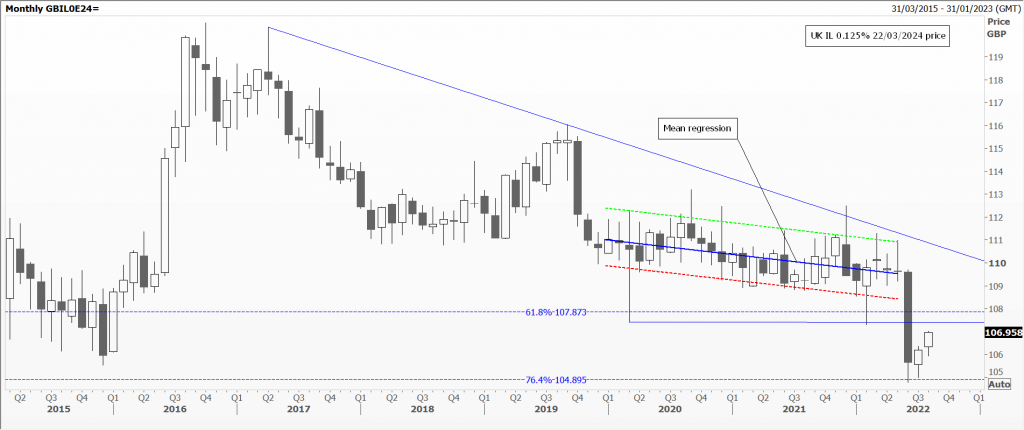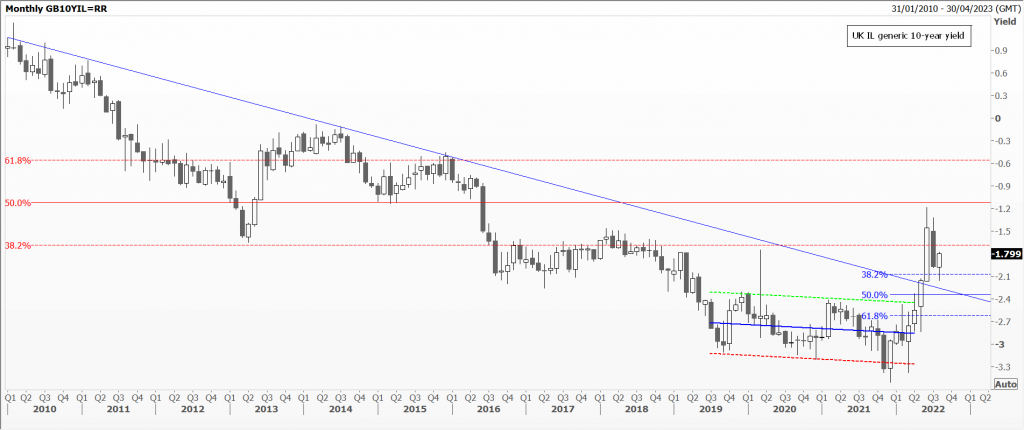Do you like a Linker? If not, why not?
For UK-based readers it probably cannot have escaped your notice that inflation in the year to July 2022 is sky high. Data published yesterday (17/08/2022) by the Office for National Statistics showed that the consumer price index (CPI) was running at 10.1% over the last 12 months. Media focused on the fact that it was in double digits (what’s the big deal between 9.9% and 10.0 %?) and commented that it was at its highest since 1982. Sadly the biggest month-on-month lift was in the cost of food and non-alcoholic beverages at 2.3% – adding up to 12.7% annualised.
CPI is just one of several measures of UK inflation; the far older retail price index (RPI) printed at 12.3% and CPIH (which includes owner occupier costs) 13.6%. Ouch! All too many echoes of 1970s Britain working a 3-day week, heat waves and droughts.
The UK has a lousy record on controlling inflation – with or without an independent Bank of England. So much so that it was the one of the first countries to issue sovereign bonds liked to annualised inflation, called Index Linked Gilts, in 1981. They have set maturity dates, regular semi-annual coupons, are rated as other government paper, but the key difference is that you also get an annual payment equivalent to the increase in RPI; you’re not penalised should deflation occur. Chancellor George Osborne tried unsuccessfully to change the link to CPI (which is persistently lower than the old measure), though National Savings and Investments managed to sneak through this cut to pay-outs. Despite this, NS&I linkers have been so popular that new issues are few and far between, though outstanding issues by the Bank of England are currently running at roughly one quarter of all gilts.
In May 2021 UK CPI rose to 2.1%; in November 2021 it rose to 5.1%, well above the 2.0% long term target – and still the Bank of England did nothing. This is when a rout in developed market bonds started – and still central banks did nothing. This year bond volatility has been concentrated at the 2-year maturity, as central bank policy appears incoherent, and though the long end has taken a big hit, it’s far more stable, leading to inverted yield curves.
https://dmo.gov.uk/data/gilt-market/index-linked-gilts/
There is plenty more commentary and analysis available if you join the STA. Become a member and get 10% off your first year’s subscription by quoting this code number STABLOG
Tags: inflation, real yield, Sovereign bonds
The views and opinions expressed on the STA’s blog do not necessarily represent those of the Society of Technical Analysts (the “STA”), or of any officer, director or member of the STA. The STA makes no representations as to the accuracy, completeness, or reliability of any information on the blog or found by following any link on blog, and none of the STA, STA Administrative Services or any current or past executive board members are liable for any errors, omissions, or delays in this information or any losses, injuries, or damages arising from its display or use. None of the information on the STA’s blog constitutes investment advice.
Latest Posts
- Navigating the Market: Insights from Robin Griffiths and Ron William April 9, 2025
- Avoid Revenge Trading: The Key to Long-Term Trading Success March 31, 2025
- Mastering Relative Strength Portfolios: Key Takeaways from the March STA Meeting March 12, 2025
- Stay Disciplined, Stay Profitable February 26, 2025
- Understanding Price Gaps in Trending February 19, 2025






















Latest Comments